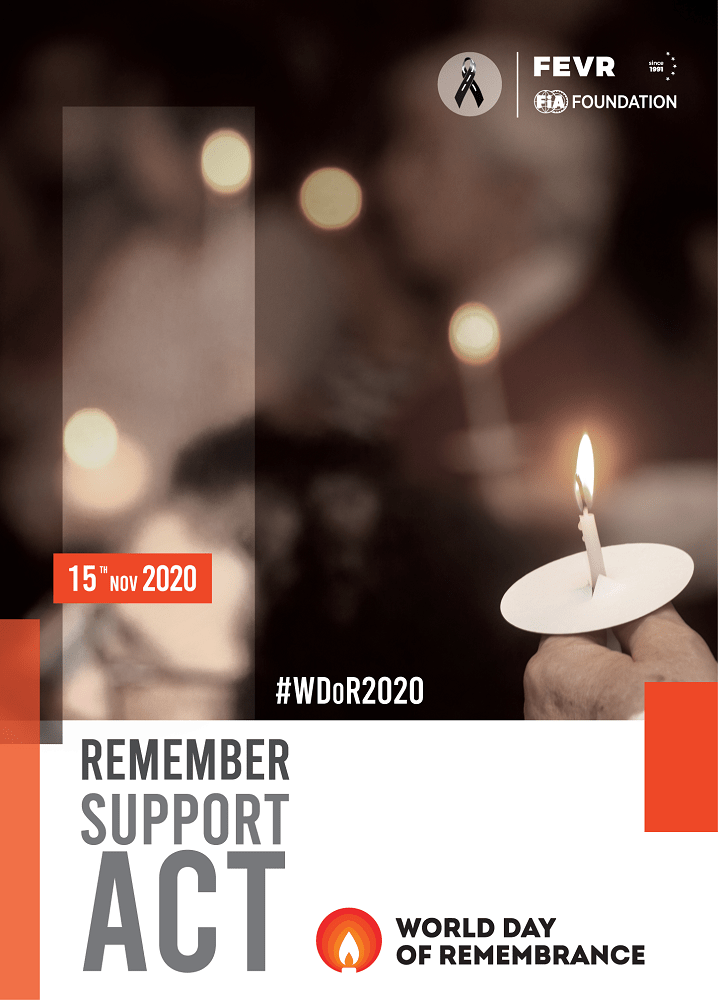
This Sunday, November 15th, marked the ‘World Day of Remembrance for Road Traffic Victims’, a day in which commemorations every year remember the victims of road traffic crashes and their families. This year marks 25 years since the first Day of Remembrance was observed in 1995.
This day focuses on both the overall scale and the individual devastation caused by road deaths and injuries and the impact upon families and communities around the world. Almost 4,000 people are killed and many hundreds of thousands injured on roads throughout the world every day. Many more have to cope with bereavement or the effects of injury and thus become part of the huge group of people affected by road carnage. The Global status report on road safety, launched by WHO in December 2018, highlights that the number of annual road traffic deaths has reached 1.35 million. Road traffic injuries are now the leading killer of people aged 5-29 years.

This year's edition is different from the past ones as due to Coronavirus, most commemorations have been held online. But the global idea remains the one of designing a system guaranteeing safe transport for all users, with safe roads and roadsides, safe speeds, safe vehicles, and safe road users: all of these must be addressed in order to eliminate fatal crashes and reduce serious injuries.
Among the causes leading to fatalities, distracted driving still remains a leading one. While there are many types of distractions that can lead to impaired driving, the distraction caused by mobile phones is growing as a habit. Drivers using mobile phones are approximately 4 times more likely to be involved in a crash than drivers not using a mobile phone. Using a phone while driving slows reaction times (notably braking reaction time, but also reaction to traffic signals), and makes it difficult to keep in the correct lane, and to keep the correct following distances. Hands-free phones are not much safer than hand-held phone sets, and texting considerably increases the risk of a crash.
While road traffic deaths are counted in the year they occur, a family remains bereaved forever. The bereaved are not counted or included in road traffic injury data. Many others remain deeply affected by the loss of a friend, colleague, neighbour or member of the community.

Photo by Mikael Seegen on Unsplash





